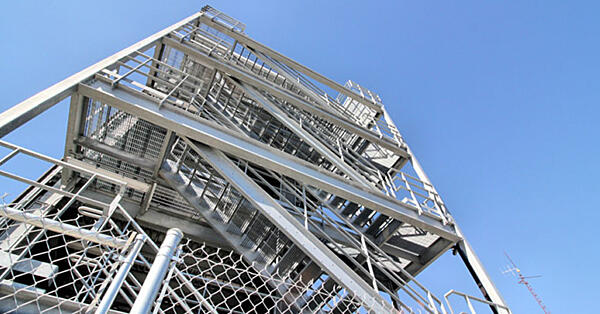HDG Economic Advantages

Sustainable development is increasingly important to specifiers and the general public throughout the construction industry. Sustainable development is the social, economic, and environmental commitment to growth and development that meet the needs of the present without compromising the ability of future generations to meet their own needs. Often lost in the emphasis on sustainability is the economic factor. To achieve true sustainability, environmentally friendly structures must also be economically responsible for future generations to thrive.
As the social pressure continues to drive the sustainability movement, specifiers are becoming more invested and analytical in the evaluation of materials utilized in their projects. Sustainability centers on thinking about the future; thus, the short-sightedness of only considering initial cost should be augmented with the long-term life-cycle cost analysis. Evaluating the cost of a project throughout its life ensures more economic stability for future generations.
Hot-dip galvanized steel can provide economic savings both initially and throughout the life of a project, freeing up money for new construction rather than costly maintenance. There has long been a perception in the specifying community that hot-dip galvanized steel is cost-prohibitive on an initial basis. However, due to regular process improvements and the relatively stable zinc prices, galvanized steel is not only competitive but often less expensive than other corrosion protection systems initially. Furthermore, because of quick turnaround and erection, utilizing hot-dip galvanized steel often provides wider-ranging cost savings during construction.

Though initial cost is important, analyzing the costs throughout the life of the project provide a more comprehensive picture for future generations. Life-cycle cost (LCC) takes into account not only the initial cost, but the direct maintenance costs throughout the life of the structure, and the time value of money over the project life utilizing net present value (NPV) and net future value (NFV) calculations.
Because hot-dip galvanized steel provides decades of maintenance-free corrosion protection, often the initial cost is the final, life-cycle cost. Evaluating LCC can be cumbersome, so to facilitate the analysis, the AGA developed the Life-Cycle Cost Calculator (LCCC). The LCCC follows the calculation from ASTM A1068 Standard Practice for Life-Cycle Cost Analysis of Corrosion Protection Systems on Iron and Steel Products and uses data as reported in NACE Paper No C2014-4088 Expected Service Life and Cost Considerations for Maintenance and New Construction Protective Coating Work as well as from a nationwide survey of AGA members.
The online calculator allows users to input the parameters for a project and compare the initial and life-cycle costs of hot-dip galvanizing to more than 30 other corrosion protection systems based on the published cost data from the two mentioned sources. Additionally, the LCCC can compare the initial and life-cycle costs of utilizing a duplex system (hot-dip galvanizing and paint) to just painted black steel. Duplex systems are more expensive initially because you are paying for both systems (galvanizing and paint) up front, but the return on this initial investment is realized over the life of the project because less maintenance is required.
